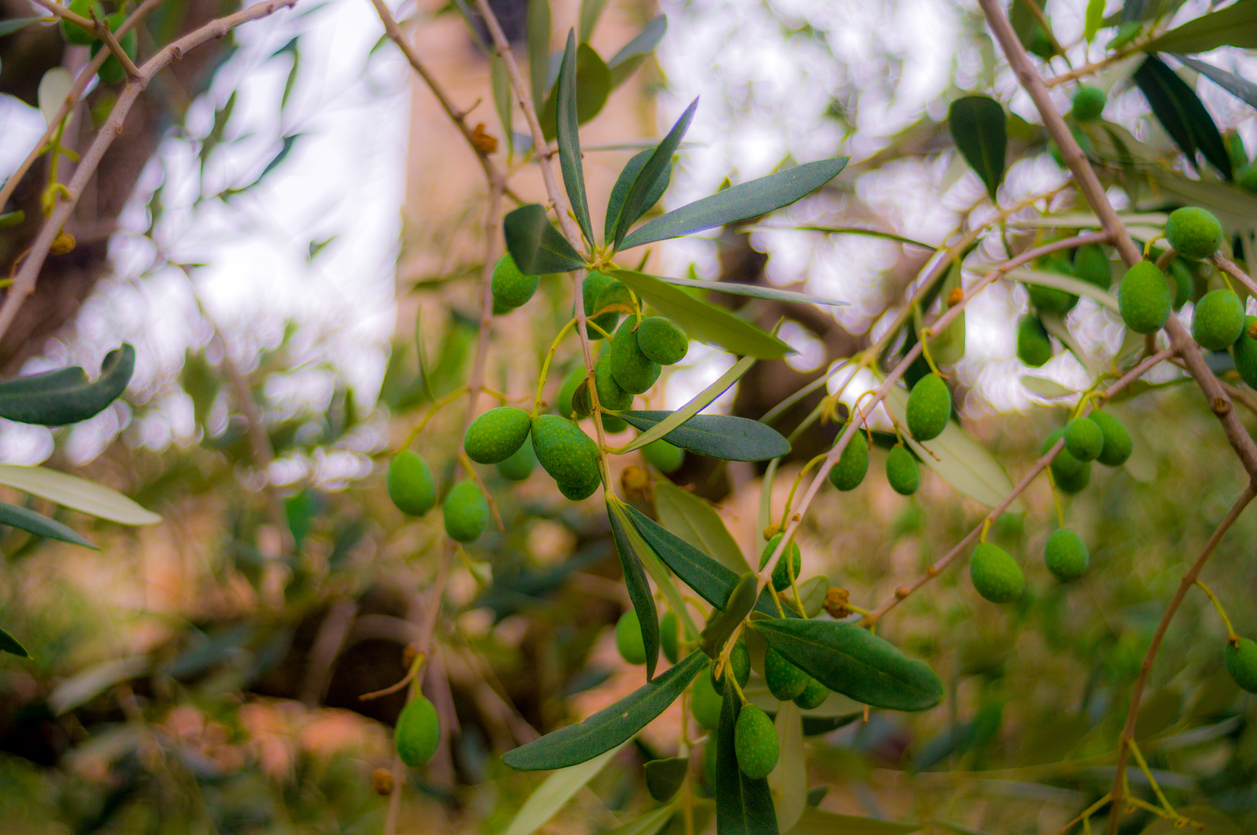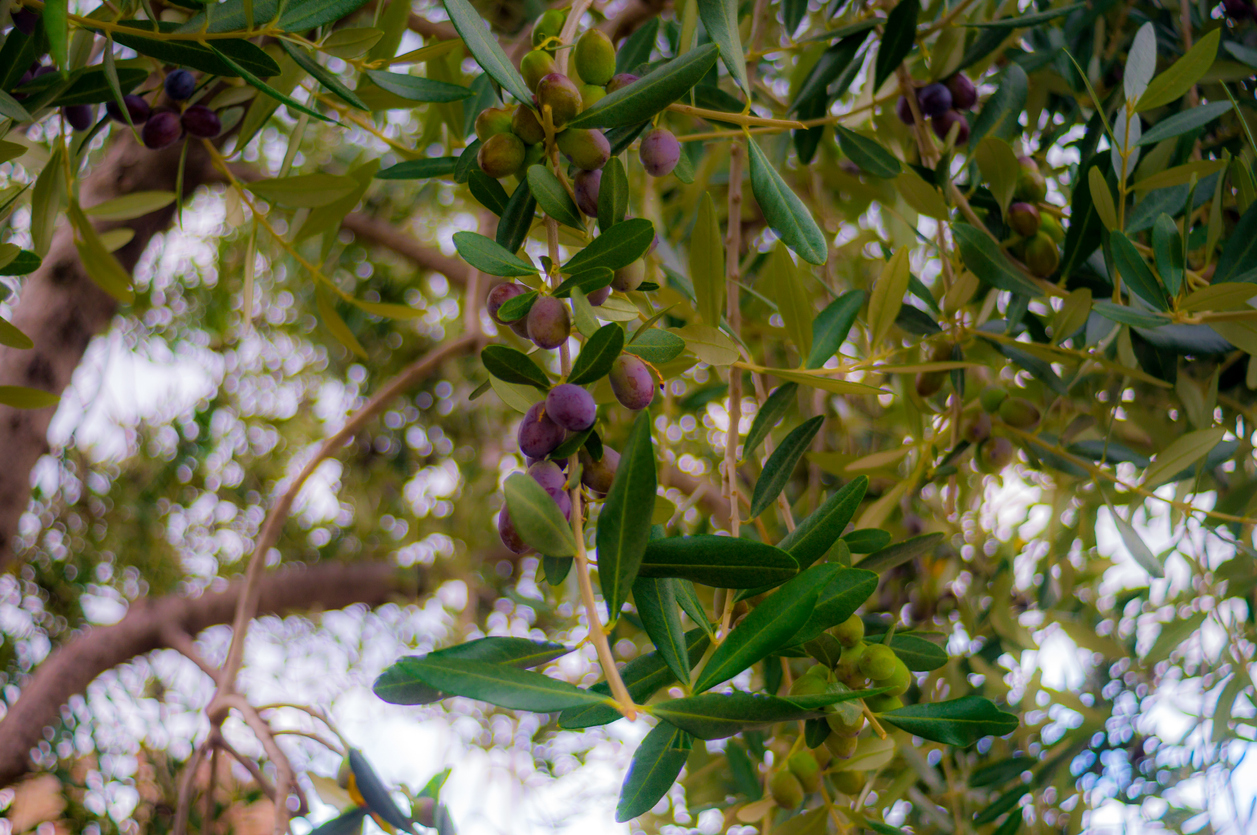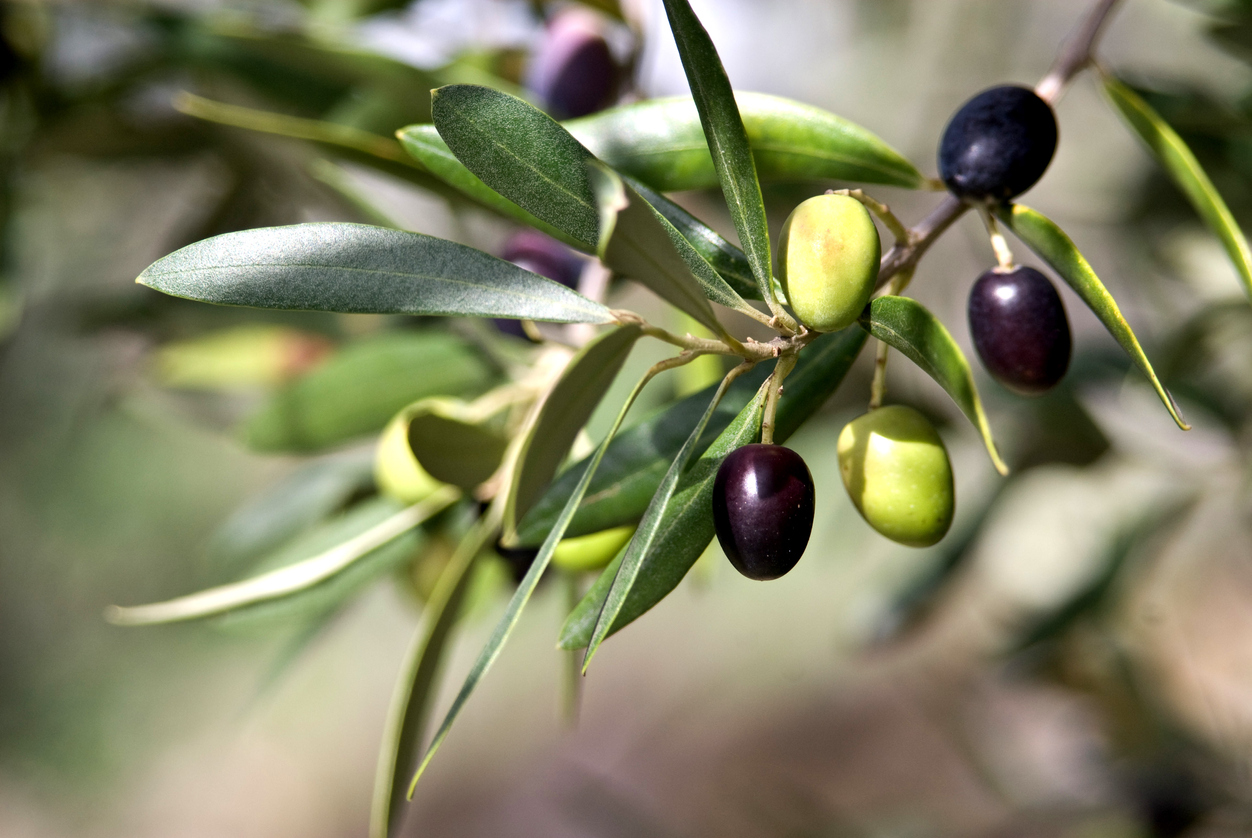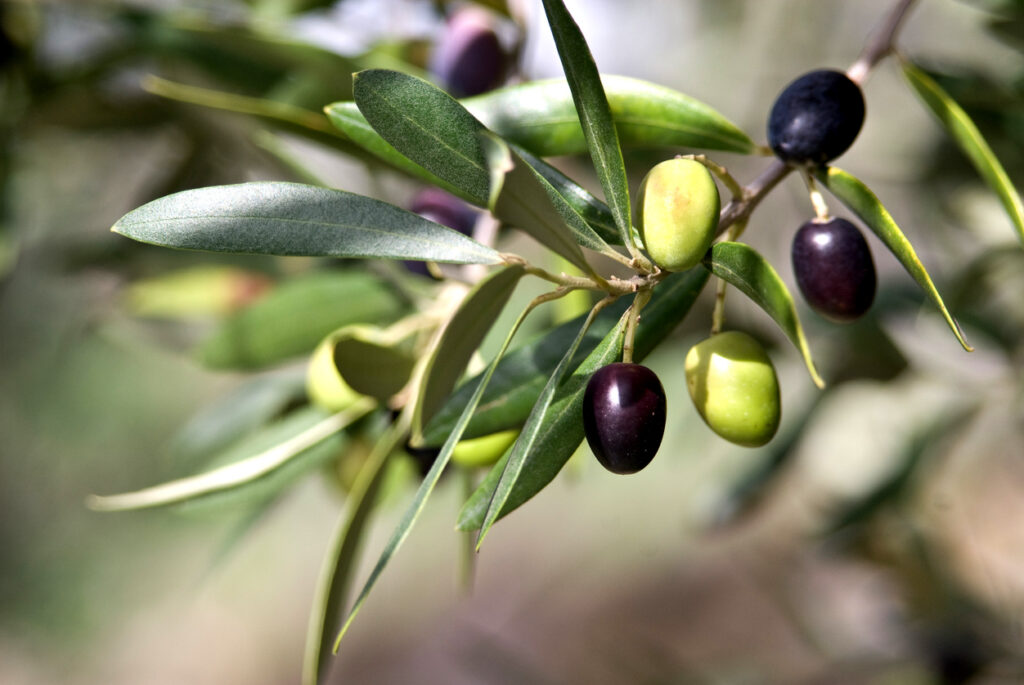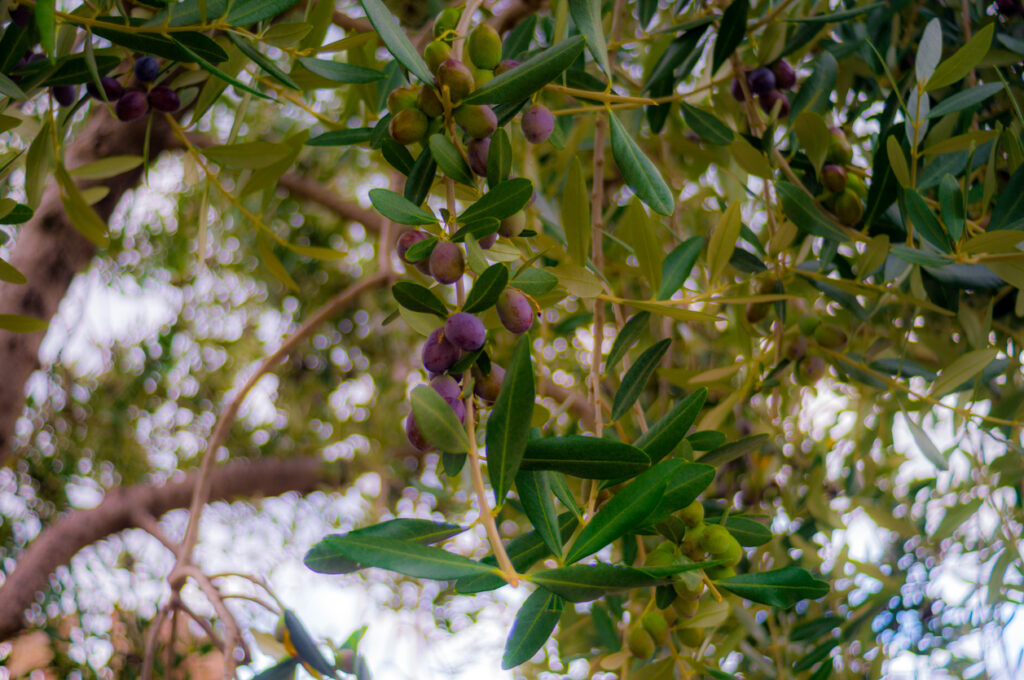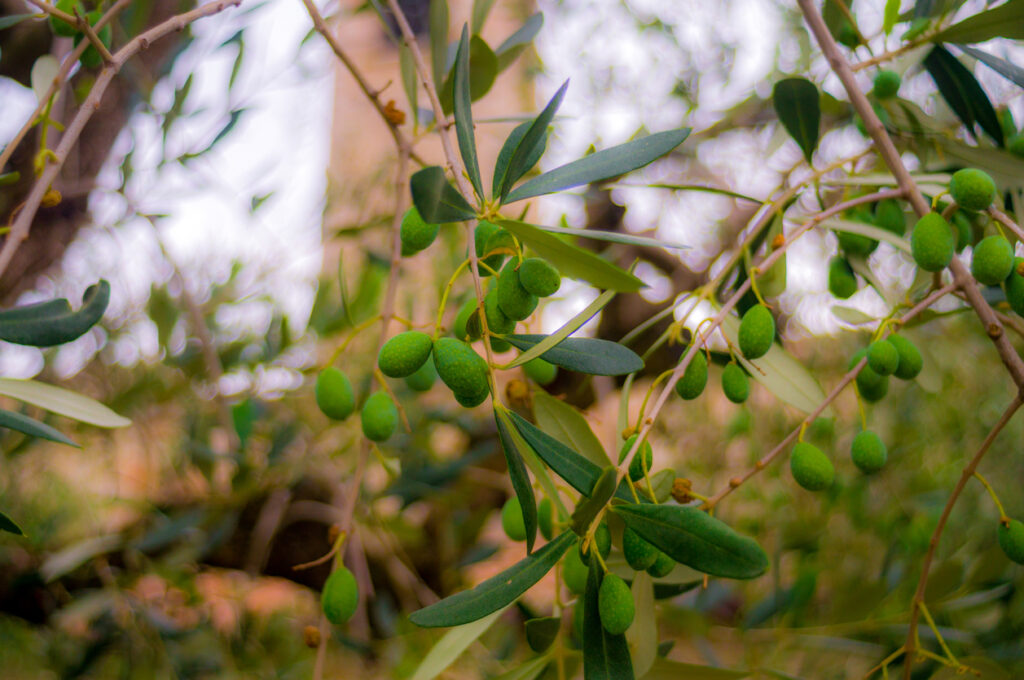Olive Trees – How To Grow, Care For, And Harvest Olives
Nothing is more calming, rewarding, and peaceful than growing olive trees. You can plant it in the garden, an orchard, or as a houseplant in a suitable container. The olive tree has an ancient look about it that conveys wisdom and peace. The gnarly trunk and sedated greenness of the leaves are a testament to the long history that this tree shares with humanity.
Whatever your reason for growing olive trees, these evergreen perennials have something for everyone. You can grow it for its precious olive oil, to pickle and preserve its fruits, or simply as an ornamental tree known for its low maintenance and longevity. Not to mention that it’s one of the easiest trees to grow in your garden. So what are the prerequisites of growing olive trees in your garden? And how can you care for it so you’ll get a good harvest every year? In this guide, you’ll find the answers to these questions along with the best ways to harvest and store olives.
All about Olive Trees
Olive trees (Olea europaea) have always been regarded as a symbol of peace. Native to the Mediterranean, they are classified as evergreen shrubs or small trees. The olive tree has USDA hardiness zones between 8 and 11 making it suitable for moderate to warm climates.
On average the mature tree reaches heights between 25 and 30 feet. It doesn’t require a large space to grow and you can even plant it in your backyard. It still requires full sun though and if you grow it for its fruits, you’ll have to wait for anything between 3 to 5 years before you get your first harvest. The fruits often ripen in the late summer or early fall depending on the cultivar or variety you grow.
The aromatic flowers usually attract bees and butterflies which are essential for their pollination. A member of the Oleaceae family, olive trees do well with other companion plants such as oregano, thyme, and lavender as well as other Mediterranean bulbs and herbs.
If you grow more than one olive tree in the garden or orchard, make sure to leave about 12 feet between them. For hedge trees, you can space them out about 6 feet apart.
Olive Trees Varieties
For a tree that has been around for thousands of years, you can expect to have many species and cultivars. Olive trees have different cultivars and you can choose one that best suits your purpose of growing it. Some cultivars produce more oil while others have tastier fruits that are good for pickling and preserving. Here are some of the most popular olive tree cultivars.
- Arbequina: Native to Catalonia in Spain, this popular variety grows up to 30 feet tall. However, if you plant it in a container, you can keep it compact as a houseplant. It has a high tolerance to cold weather and its fruits are usually small and brown in color. The oil of this variety is known worldwide for its aromatic flavors.
- Picholine: The fruits of this variety are usually light green and are good for cooking, salads, and producing oil. You can also grow it indoors since it doesn’t reach its full height in a container. Originally from France, it has USDA hardiness zones between 8 and 10 and needs full sun.
- Mission: A popular variety in California, the relatively large fruits are mainly for eating not making oil. Once cured in brine, the fruits become sweet and are good as a snack. Not for indoor growing, the average tree reaches 30 feet when mature and has USDA hardiness zones between 7 and 10.
- Amfissa: One of the original species that grew out of Greece and were mentioned in Homer’s epics. The ripe fruits are usually brown and you can expect to get your first harvest within 3 years of planting the tree. They require full sun and prefer warm weather and full sun exposure.
- Nocellara Del Belice: These green olives from Sicily have a buttery texture and mild taste making them ideal for pickling and as snacks. The mature tree will only reach 20 feet although its dense canopy makes it ideal as a shade tree. It has a high resistance to pests and diseases.
If you’re not sure which variety grows best in your area, you can call the local Cooperative Extension Service to get a list of the right cultivars that work for you. They can also test your soil and provide other agricultural services free of charge.
How To Grow Olive Trees
Since they prefer warm weather, olive trees are best suited for areas where the summer months are hot and long. However, for the trees to flower, they need some moderate to cold winters. Apart from these specific and unique weather conditions, the olive tree is humble and undemanding in every other aspect. Here’s how to grow olive trees in simple and easy steps.
- The best time to grow olive trees is when the weather is moderate, either in the spring or fall.
- Select a spot in your garden that gets plenty of sun without the threat of shade or any strong wind.
- Break the top 7 to 8 inches of the soil and work in organic materials, manure, and compost to provide the required nutrients to give the tree a good start.
- Dig a hole as deep as the root ball of the tree you got from the nursery and twice as wide.
- Line the bottom of the hole with a thin layer of organic fertilizer.
- Remove the tree from the pot or burlap it came in and ruffle the roots to spread them out.
- Place the tree in the hole making sure that the soil mark of the original container lines with the surface of the hole.
- Fill the hole with a mixture of equal proportions of aged compost and soil. Pack the soil to push out any air pockets and help the tree stand upright on its own.
- Arrange the soil around the tree and build a circular raised edge to contain the water.
- Water the tree immediately to settle the soil and allow the roots to absorb the moisture and nutrients in the soil.
Olive Trees Care
Even though olive trees are self-fruitful they are more productive when the flowers are pollinated from other olive trees. If you grow more than one olive tree in your garden or orchard, you can cross-pollinate the flowers of each tree or just leave that to bees and butterflies. It’s their job anyway. Also, make sure to space the trees about 20 feet apart to give them room to grow.
Soil
Loamy soil is the best type for olive trees. As long as the soil has more silt and sand than soil, it will encourage the growth of these evergreen perennials. The roots of the tree need aeration and clay soil doesn’t suit them. At the same time, sandy soil doesn’t hold the water and is poor nutrition-wise. If you have clay soil you can plant the olive tree in a raised bed to help with aeration. Test the soil before you plant the tree and bring the pH levels to about 7 or 8. Also, keep in mind that the roots of the tree are shallow and it will get most of the moisture and nutrition near the surface.
Fertilizer
As heavy feeders, your olive trees will need a regular dose of a balanced 10-10-10 fertilizer. Once the tree is 2 years old and is above 12 feet high, you can start applying fertilizer from the spring onwards. Depending on the variety you grow, your tree might need an application every 2 to 4 weeks. As for the dosage, experts recommend you add a cup of fertilizer for every year of the tree’s life. Keep the fertilizer away from the trunk and spread it in a circle around the tree. Hold off fertilizing the tree from the late summer until the next spring. This prevents new growth in the winter which might not survive the cold months.
Prune
Pruning is by far the most elaborate aspect of olive trees care. The goal is to train the tree and give it its mature shape without damaging vital branches. So start pruning once the tree reaches its second year. From then on, you should prune the tree each year to maintain its size and shape. Don’t prune the central leader or the three main side branches. Pruning is important for olive trees since the tree always fruits on the branches of the previous year. But the fruits don’t appear on the same branch more than once. So you’ll need to remove old branches and encourage the tree to grow new offshoots that will bear fruits in the coming year.
Pests and Diseases
Once you’ve got a handle on pruning, olive trees present another challenge for your gardening skills. They are prone to many diseases. Usually, scales are the most common pests that prey on the leaves and stems sucking up the sap and impacting the crop. Use neem oil to smother those pesky bugs.
As for diseases, you need to watch out for the following.
- Peacock Spot: A fungal disease that is associated with heavy rainfall. It appears as dark spots on the edge of the leaves. The infected tree will see a decline in its crop as the fruits will drop prematurely. Apply an organic herbal fungus before the rainy season.
- Olive Knot: A bacterial disease that affects the branches of the tree. It appears in the form of swellings in the summer. Use sharp pruning shears to cut off the swellings and prevent their spread.
- Verticillium Wilt: Another bacterial disease that causes the leaves to curl up and fall. If the disease remains untreated it could prove fatal for the tree. Remove infected leaves to contain the disease.
Harvesting Olives
Most olive trees would produce fruits between 3 to 5 years from the time you plant them. Usually, fruit-bearing works on an alternate year pattern. If one year you have a heavy crop, the next year it will be light, and so on. Green olives are good for pickling and snacks when cured with brine. If you want to produce oil, you should wait for the olives to ripen on the tree and turn black. Pick table olives with your hand just before they turn yellow. As for oil olives, you can knock them to the ground with a pole and collect them when the skin is dark but the inside is still green. Cure the table olives with brine and store them in cans.
